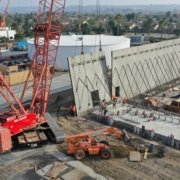Confronting the historic drought that has a firm grip on the American West requires a heavy federal infrastructure investment to protect existing water supplies but also will depend on efforts at all levels of government to reduce demand by promoting water efficiency and recycling, Interior Secretary Deb Haaland said Thursday.
Haaland told reporters in Denver that the Biden administration’s proposed fiscal year 2022 budget includes a $1.5 billion investment in the Bureau of Reclamation, which manages water and power in the Western states, and more than $54 million for states, tribes and communities to upgrade infrastructure and water planning projects.











